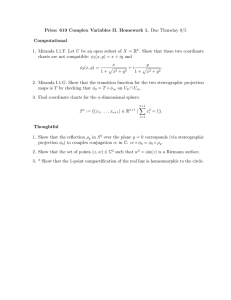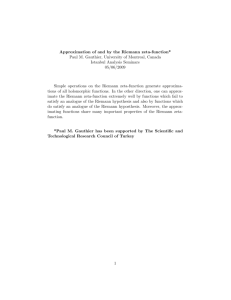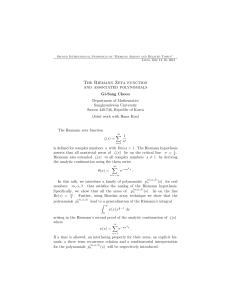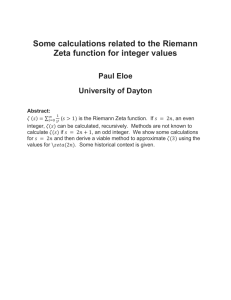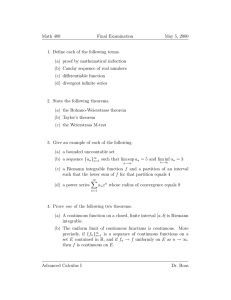Exercise on Riemann surfaces
advertisement
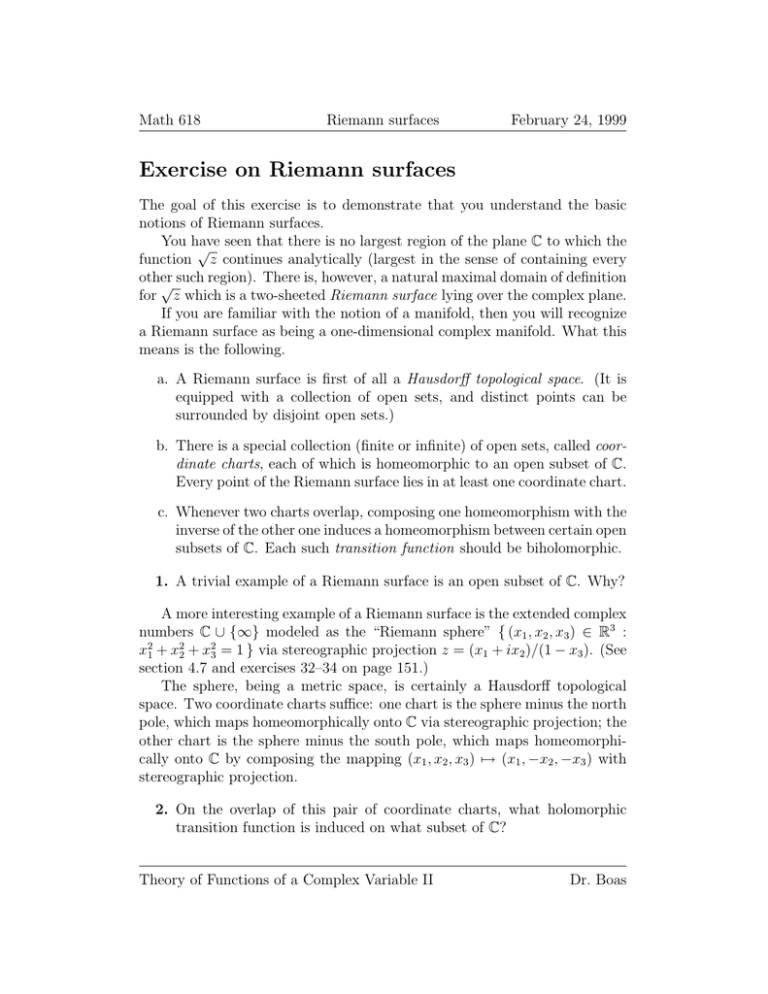
Math 618
Riemann surfaces
February 24, 1999
Exercise on Riemann surfaces
The goal of this exercise is to demonstrate that you understand the basic
notions of Riemann surfaces.
You have
√ seen that there is no largest region of the plane C to which the
function z continues analytically (largest in the sense of containing every
other
√ such region). There is, however, a natural maximal domain of definition
for z which is a two-sheeted Riemann surface lying over the complex plane.
If you are familiar with the notion of a manifold, then you will recognize
a Riemann surface as being a one-dimensional complex manifold. What this
means is the following.
a. A Riemann surface is first of all a Hausdorff topological space. (It is
equipped with a collection of open sets, and distinct points can be
surrounded by disjoint open sets.)
b. There is a special collection (finite or infinite) of open sets, called coordinate charts, each of which is homeomorphic to an open subset of C.
Every point of the Riemann surface lies in at least one coordinate chart.
c. Whenever two charts overlap, composing one homeomorphism with the
inverse of the other one induces a homeomorphism between certain open
subsets of C. Each such transition function should be biholomorphic.
1. A trivial example of a Riemann surface is an open subset of C. Why?
A more interesting example of a Riemann surface is the extended complex
numbers C ∪ {∞} modeled as the “Riemann sphere” { (x1 , x2 , x3 ) ∈ R3 :
x21 + x22 + x23 = 1 } via stereographic projection z = (x1 + ix2 )/(1 − x3 ). (See
section 4.7 and exercises 32–34 on page 151.)
The sphere, being a metric space, is certainly a Hausdorff topological
space. Two coordinate charts suffice: one chart is the sphere minus the north
pole, which maps homeomorphically onto C via stereographic projection; the
other chart is the sphere minus the south pole, which maps homeomorphically onto C by composing the mapping (x1 , x2 , x3 ) 7→ (x1 , −x2 , −x3 ) with
stereographic projection.
2. On the overlap of this pair of coordinate charts, what holomorphic
transition function is induced on what subset of C?
Theory of Functions of a Complex Variable II
Dr. Boas

